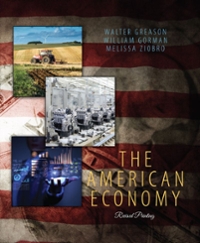Question
Below is an excerpt from the Wall Street Journal article Pet Food Sales Soar, Boosting Nestle and Luring Other Players by Saabira Chaudhuri, February 13,
Below is an excerpt from the Wall Street Journal article "Pet Food Sales Soar, Boosting Nestle and Luring Other Players" by Saabira Chaudhuri, February 13, 2020.
Pet food sales are soaring, boosting revenue at packaged-food giants that have struggled in recent years selling staples like frozen food, cereal and bottled water.
NestlSA,the maker of Nescafe coffee and KitKat chocolate, said its North America volume growth for the year was the best in a decade, buoyed by strong sales of its Purina brand. The boost comes amid a yearlong fight by packaged-goods companies tokeep up with fast-changing tastes. Pet food has been a bright spot.
Nestl's strong pet food showing, disclosed as part of its annual earnings, comes afterGeneral MillsInc.said in December that pet food sales helped it outweigh weakersnack bar and yogurt salesin its latest quarter. In developed markets, later marriages and smaller families are propelling consumers to focus on their pets. Pet food sales globally have climbed 61% since 2010, according to research firm Euromonitor.
As pet owners increase their spending, brands are rushing to sell organic, customized, grain-free and other kinds of pricey pet food. In 2018, General Mills bought premium pet-food maker Blue Buffalo and Nestl that year bought a majority stake in British tailor-made dog food company Tails.com.
Nontraditional players are moving in as well.Amazon.comInc.rolled out premium pet-food brand Wag in 2018. Actor Will Smith and musician Nas invested in dog food startup Jinx Inc., which blends meats with so-called superfoods like avocados and sweet potatoes
In November 2019, J.M. Smucker Co. blamed intense competition for a drop in premium pet food sales, lowering its overall outlook.
After reading the above excerpt, answer the following questions. Type the answers in a file and upload the file on Canvas.
- Even though there is intense competition among firms in the market for pet food, can this market be described as a perfectly competitive market? What kind of market structure do we see in the market for per food?
- The demand curves of perfectly competitive firms are perfectly elastic. What kind of demand curves for pet food do firms like J.M. Smucker, Kraft Heinz and Unilever face?
- For a firm that faces a downward-sloping demand curve for a product it sells, the price of the product will be greater than marginal revenue. Explain why.
- Monopolistic competition refers to a market structure in which barriers to entry are low and many firms compete by selling similar, but not identical, products. Because of free entry, firms in the long run earn zero economic profit. However, firms in a monopolistically competitive industry do not produce the efficient scale (that is, an output where the average total cost is at its minimum). Explain why.
Step by Step Solution
There are 3 Steps involved in it
Step: 1

Get Instant Access to Expert-Tailored Solutions
See step-by-step solutions with expert insights and AI powered tools for academic success
Step: 2

Step: 3

Ace Your Homework with AI
Get the answers you need in no time with our AI-driven, step-by-step assistance
Get Started


